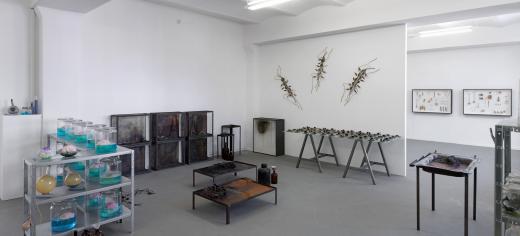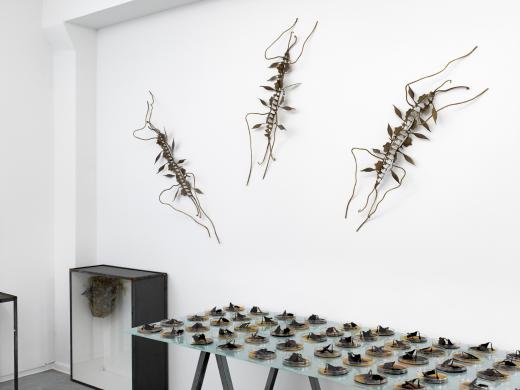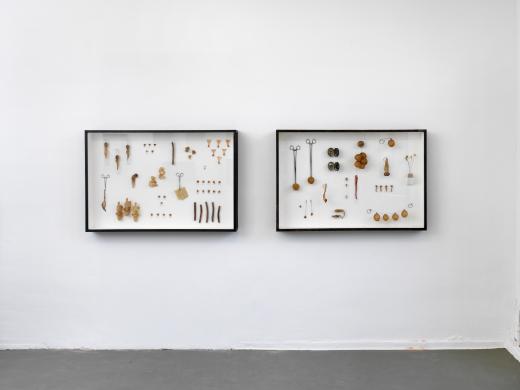Wolfgang Stiller, "Laboratory I" at Delloro Contemporary Review
Wolfgang Stiller, "Laboratory I" at Delloro Contemporary Review

After climbing the stairs to the top floor of an old industrial building, now Delloro Contemporary Art, one enters Wolfgang Stiller’s installation, Laboratory I, an installation that feels like a combination of the backstage office at the natural history museum and a turn of the 20th century laboratory. In the first space, the lab, there are shelves and tables holding what appear to be products of a serial scientific investigation. The second part of the space takes on a more museum like quality. The items are carefully arranged in display cases and boxes for a seemingly archival purpose.

Almost everything in the exhibit exists as a multiple, mimicking the repetition of the experiments necessary for scientists to verify a claim. Often, scientific experiments are conducted to prove something specific, and the process is very result-orientated. In Stiller’s installation, however, he is using the science aesthetic and semiotic signs of science to achieve a different end. Stiller himself describes the work as “funny science.”

The humor in the work is subtle but has a significant presence. One can construct the narrative that the scientists have left for the night, and the laboratory takes on a life of its own; scrap metal critters climb the walls and slither across the floor. There is also humor in the materials and forms. The aesthetically stunning pink brain-like forms floating in clear cyan-blue liquid are in fact not brains or casts of brains, but rather wax casts of cauliflower heads. At first glance, the objects in the display boxes can easily be mistaken for dried skins. After looking closely they reveal themselves to be the cut off ends of balloons or latex casts of water pistols. Found materials are often the first step for Stiller’s process. The relationship between the organic, bodily forms and the artificial and industrial materials he uses create a bit of discomfort but are also witty.

The work is a combination of new and old pieces, some of which have been exhibited before in the late 1980s and early 1990s. It is the product of a 15 year-long project that is always changing and taking on new presentations. Stiller describes the process of taking the older work out of storage as “like seeing old friends.” His current sculptures and drawings are much different and seemingly unrelated to the Laboratory project; he believes it is better to keep reinventing his practice in order to keep things fresh.

The show is on view until 30.07. Also at the gallery is Andreas Zingerle’s Squeeze, another show not to be missed!